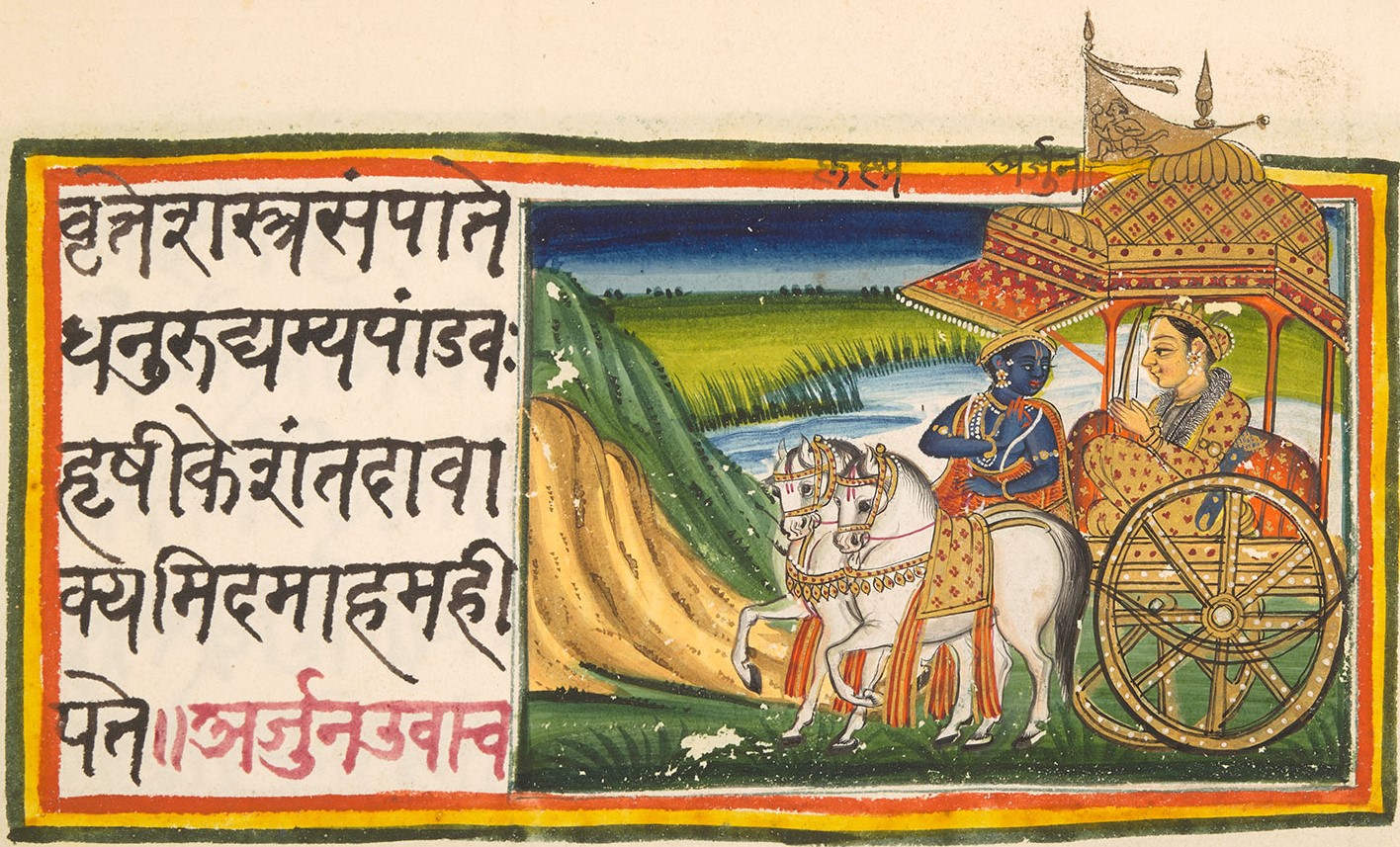
THE HISTORY OF INDIC CALLIGRAPHY
Indic writing first appeared in the 3rd century BCE during the reign of Ashoka (c. 265–238 BCE). The leader of a great empire, Ashoka turned from military success to embrace the arts and religion. Ashoka’s edicts were committed to stone. These inscriptions are stiff and angular in form. Following the Ashoka style of Indic writing, two new calligraphic types appear: Kharoshti and Brahmi. Kharoshti was used in the northwestern regions of India from the 3rd century BCE to the 4th century CE, and it was used in Central Asia until the 8th century. It is characterized by a vigorous pen letter, reflecting the influence of Middle Eastern calligraphy.
Indian calligraphy took off starting around 500 AD when Indian traders, colonists, military adventurers, Buddhist monks and missionaries brought the Indic script to Central Asia from South East Asia. Different concepts and ideas were being created throughout the late 400s to late 1400s, in a 1000-year span. The Gilgit scripts are the earliest notable form of calligraphy in India that date back to the 5th and 6th centuries. The earliest painted covers of manuscripts were created between the 7th and 9th centuries, and the earliest illustrated manuscript in South Asia was not formed until around the 10th century.
From the 16th century onwards Sikhism played a key role in the history of Indian calligraphy. Sikhs have traditionally handwritten their holy book, the Guru Granth Sahib, and furnished it with illumination. Sikh calligrapher Pratap Singh Giani (1855–1920) is known for one of the first definitive translations of Sikh scriptures into English.
INDIC ALPHABET
India is a country with a diversity in culture as well as language and scripts. Over 720 dialects of 22 major languages are spoken countrywide. These languages are written in about 13 different scripts, most of which are Brahmi derived, such as Devanagari, Bengali, Gurumukhi, Gujrati, Tamil and Telugu. With the passage of time these scripts evolve, like the Devanagari we use to write now is different from what it was back then when it was found.
Devanagari is an alpha-syllabary writing system in which consonants and vowels are separated. They are arranged in the varnamala based on their phonetic order. The writing system is based on the consonants with the vowels inherited in them, meaning the vowels are secondary yet mandatory. Every consonant has an inherent vowel sound ‘a’ (अ) in them. For example, the letter स is read "sa" not ‘s’. When not combined with any vowel, the consonants are in its raw form and require a ligature or, ‘halant’ while writing. When vowels other than the inherent vowel are added with any consonant, diacritical marks called ‘matraas’ are added (Devanagari, 2017).
The varnamala, which is divided in vowels and consonants, wherein the vowels are arranged first and the consonants later. The short vowels are followed by its longer equivalent. The consonants are divided in rows, each row defines the way the letters are spoken, this manner indicates the various points from where the voice comes from. Each row follows the order of aspirated and unaspirated voices, meaning whether there is a strong burst of breath accompanied while pronouncing each letter or not (ScriptSource Staff, 2011). The diacritic forms of consonants are combined with the vowel ‘अ’ forms letters without the halant added with them. And when these consonants are combined with the longer vowel variation, not just the halant part is removed also the matra of the vowel is added in the consonant.
क् + अ = क
क् + आ = का
There are 36 consonants in the Devanagari script. Out of which, the last few can also be broken down further or, can be created by combining other consonants, these are called conjunct consonants (sanyukt vyanjan) (Salmon, 2000).
त् + र् + अ = त
श् + र् + अ = श
ज् + ञ् + अ = ज
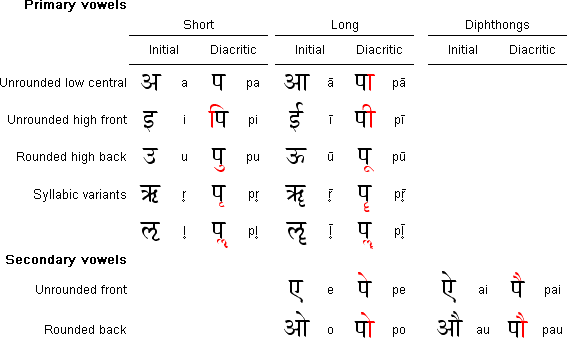
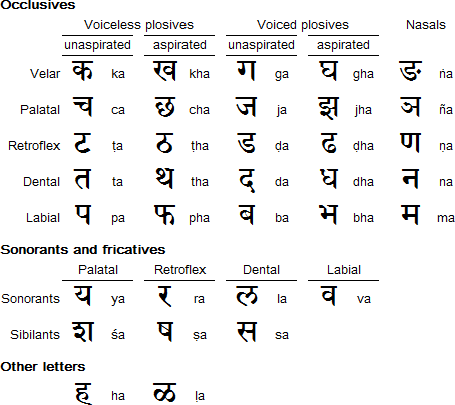

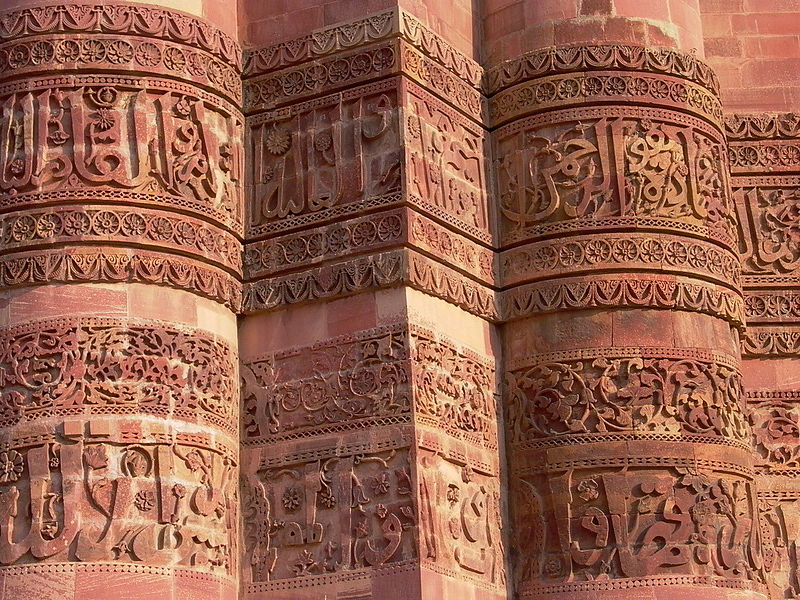
Inscriptions in the Kufic on Qutb Minar, Delhi, built 1192 CE
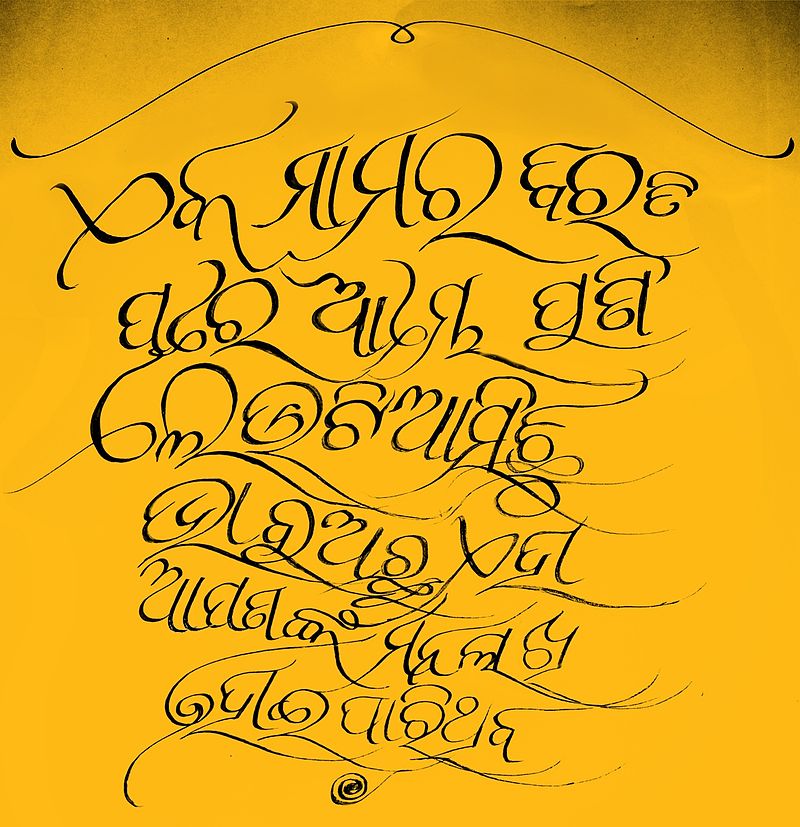
A Calligraphic design in Odia script
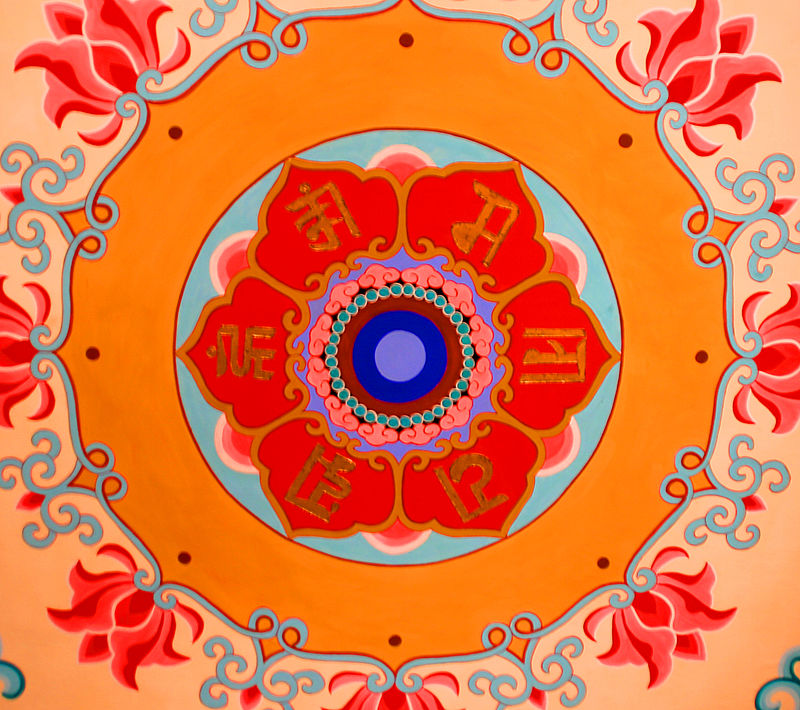
Mantra in Rañjanā script, on the ceiling of a Buddhist temple in China
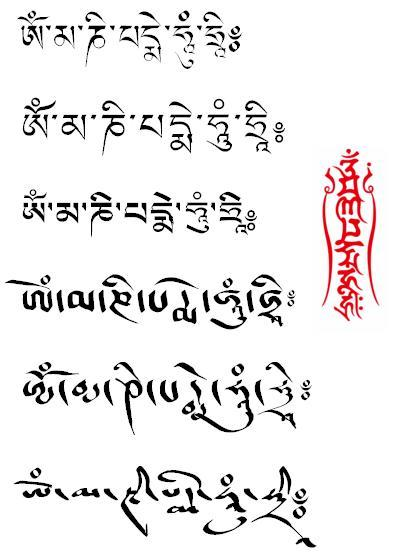
6 different Tibetan script styles traditionally used by Tibetans